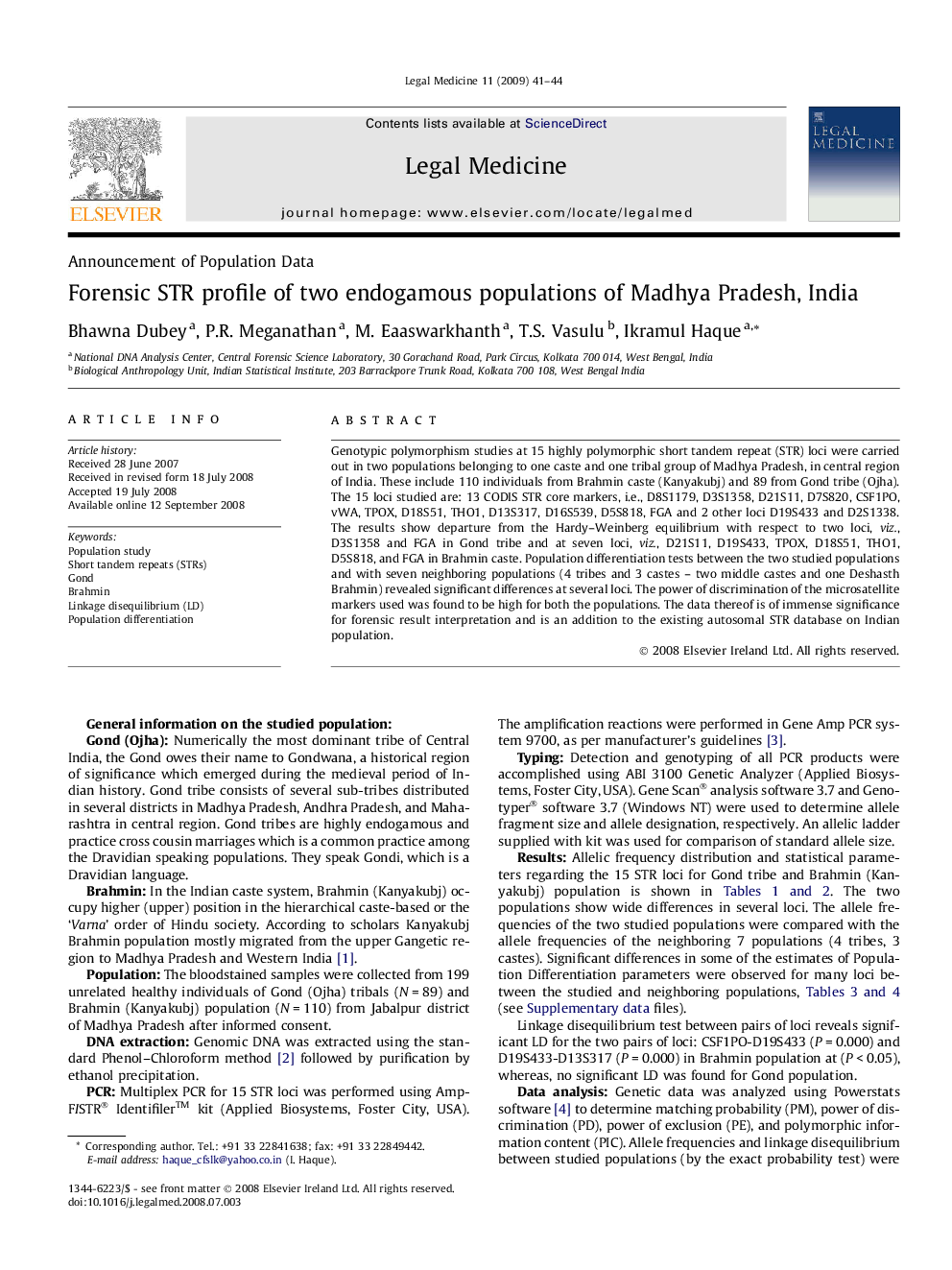| Article ID | Journal | Published Year | Pages | File Type |
|---|---|---|---|---|
| 103800 | Legal Medicine | 2009 | 4 Pages |
Genotypic polymorphism studies at 15 highly polymorphic short tandem repeat (STR) loci were carried out in two populations belonging to one caste and one tribal group of Madhya Pradesh, in central region of India. These include 110 individuals from Brahmin caste (Kanyakubj) and 89 from Gond tribe (Ojha). The 15 loci studied are: 13 CODIS STR core markers, i.e., D8S1179, D3S1358, D21S11, D7S820, CSF1PO, vWA, TPOX, D18S51, THO1, D13S317, D16S539, D5S818, FGA and 2 other loci D19S433 and D2S1338. The results show departure from the Hardy–Weinberg equilibrium with respect to two loci, viz., D3S1358 and FGA in Gond tribe and at seven loci, viz., D21S11, D19S433, TPOX, D18S51, THO1, D5S818, and FGA in Brahmin caste. Population differentiation tests between the two studied populations and with seven neighboring populations (4 tribes and 3 castes – two middle castes and one Deshasth Brahmin) revealed significant differences at several loci. The power of discrimination of the microsatellite markers used was found to be high for both the populations. The data thereof is of immense significance for forensic result interpretation and is an addition to the existing autosomal STR database on Indian population.
